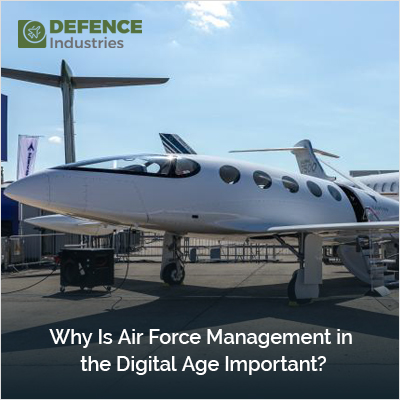Why is Airforce Management in the Digital Age Important?

Introduction:
In the ever-evolving landscape of military affairs, the digital age has ushered in a new era for air force management. The integration of cutting-edge technologies has transformed the way forces operate, plan, and respond to dynamic geopolitical challenges. This article delves into the importance of air force management in the digital age, exploring key facets such as enhanced situational awareness, precision weaponry, cyber security, interconnectedness, data-driven decision-making, the role of unmanned aerial vehicles (UAVs), and the ability to rapidly deploy and adapt to emerging threats.
Enhanced Situational Awareness:
One of the pivotal advantages brought about by digital technologies is the unprecedented level of situational awareness available to air force commanders. Sensors, satellites, and real-time data analytics have become integral components of air force management systems, providing a comprehensive and up-to-the-minute understanding of the battlefield. This heightened awareness empowers commanders to make informed decisions in real-time, enabling a more agile and responsive air force.
Precision and Accuracy:
The digital age has witnessed the development and deployment of precision-guided munitions, smart bombs, and other highly accurate weaponry. This shift towards precision not only enhances the effectiveness of military operations but also minimizes collateral damage. Airforces can now conduct targeted strikes with surgical precision, reducing the risk of unintended consequences and demonstrating a more strategic approach to the application of force.
Cybersecurity Challenges:
While digital advancements offer unparalleled benefits, they also expose airforce management systems to new challenges, particularly in the realm of cybersecurity. Protecting sensitive information, communication channels, and command and control systems has become a paramount concern. The digital age demands robust cybersecurity measures to safeguard against potential cyber threats that could compromise the integrity of airforce operations.
Interconnectedness:
In the digital age, airforce management is not an isolated endeavor but a collaborative and interconnected effort. Digital technologies facilitate improved communication and coordination not only within the airforce but also across different branches of the military. The ability to seamlessly integrate and share information enhances collaboration, supports joint operations, and fosters a more cohesive and effective military response.
Data-Driven Decision Making:
The vast amount of data generated in the digital age provides airforce management with a valuable resource for informed decision-making. Data analytics play a crucial role in extracting meaningful insights from this information overload. By leveraging data-driven approaches, airforce commanders can optimize resource allocation, predict maintenance needs, and enhance overall operational efficiency. The ability to make well-informed decisions based on real-time data is a significant advantage in the fast-paced and complex nature of modern military operations.
Unmanned Aerial Vehicles (UAVs):
One of the standout developments in the digital age is the rise of unmanned aerial vehicles (UAVs), commonly known as drones. These versatile and technologically advanced aircraft have revolutionized airforce capabilities. UAVs play a multifaceted role, from conducting surveillance and reconnaissance missions to executing targeted strikes. Their deployment provides airforces with the ability to gather intelligence and execute operations without exposing human pilots to unnecessary risks.
Rapid Deployment and Flexibility:
Digital technologies enable airforces to respond rapidly to emerging threats and adapt to evolving situations. The flexibility afforded by digital systems allows for the rapid deployment and reconfiguration of assets. This adaptability is crucial in a world where threats can materialize swiftly and unexpectedly. The digital age equips airforces with the agility needed to maintain a proactive stance, ensuring readiness to face diverse and dynamic challenges.
Conclusion:
As we navigate the complexities of the digital age, airforce management stands at the forefront of innovation and strategic evolution. The integration of advanced technologies not only enhances the capabilities of airforces but also presents new challenges that require vigilant attention. From enhanced situational awareness to precision weaponry, cybersecurity, interconnectedness, data-driven decision-making, the rise of UAVs, and rapid adaptability, the digital age has reshaped the landscape of airforce operations. Embracing these advancements is not just a necessity but a strategic imperative for airforces worldwide as they continue to safeguard national interests in an ever-changing global environment.









